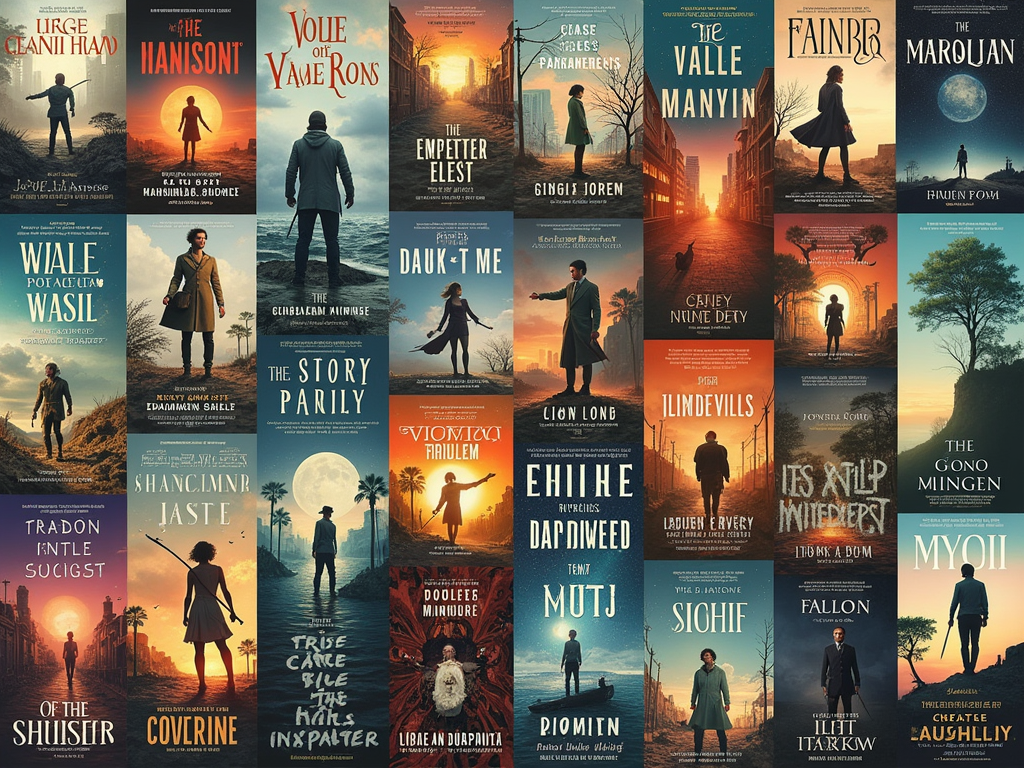Best Alternate History Novels of the Last Twenty Years: Exploring Alternative Realities and Their Impacts
Best Alternate History Novels of the Last Twenty Years Alternate history novels transport readers to reimagined pasts where pivotal events took a different turn. Over the last twenty years, this genre has flourished with creative and thought-provoking works that challenge our understanding of history. In this article, we’ll explore the best alternate history novels published since 2003, examining how these stories reshape our perspective on what might have been. These remarkable works blend historical facts with imaginative twists, creating compelling narratives that continue to captivate readers worldwide. Defining Modern Alternate History Fiction Alternate history fiction asks a simple question: “What if?” What if the Nazis had won World War II? What if the American Revolution had failed? What if technological developments had occurred in a different order? These questions form the foundation of a genre that has evolved significantly in the past two decades. The Evolution of the Genre The alternate history genre has roots stretching back centuries, but its modern form has been shaped by authors who bring increasingly sophisticated approaches to historical speculation. In the last twenty years, alternate history novels have moved beyond simple “what if” scenarios to explore historical divergence points’ complex social, political, and cultural implications. Additionally, these works often incorporate elements from other genres, including science fiction, fantasy, and literary fiction, creating rich narrative tapestries that appeal to diverse audiences. Moreover, contemporary alternate history fiction frequently addresses issues of race, gender, and colonialism that were often overlooked in earlier works. This evolution reflects broader trends in literature and society, making the best alternate history novels of the last twenty years entertaining and culturally significant. Award-Winning Alternate Histories Since 2003 The quality of alternate history fiction is often recognized through prestigious awards. Several standout novels have garnered significant acclaim, setting new standards for the genre. The Underground Railroad by Colson Whitehead (2016) Colson Whitehead’s powerful novel won the Pulitzer Prize and the National Book Award. “The Underground Railroad” reimagines the historical network that helped enslaved people escape to freedom as a literal subterranean railway. This bold alternate history uses magical realism to explore America’s painful history of slavery and racism. The novel follows Cora, an enslaved woman in Georgia who escapes northward via the railroad. Each state she traverses represents different historical aspects of American racism. Whitehead’s unique approach blends historical reality with fantastical elements to illuminate emotional and psychological truths about America’s racist past and present. Furthermore, the novel’s success demonstrates how alternate history can serve as a powerful vehicle for social commentary. By reimagining historical systems, Whitehead creates space to examine ongoing issues of racial injustice in American society. The Years of Rice and Salt by Kim Stanley Robinson (2002) Though published just outside our twenty-year window, this novel’s influence on the genre is worth mentioning. Robinson’s epic alternate history imagines a world where the Black Death killed 99% of Europe’s population, leaving Islamic and Chinese civilizations to dominate global development. The novel spans centuries and follows reincarnated souls through this radically different world. It is particularly notable for its detailed exploration of how scientific, religious, and philosophical developments might have unfolded without European dominance. Through this approach, Robinson challenges Eurocentric views of history and progress. World War II Alternate Histories No historical event has inspired more alternate history fiction than World War II. The conflict’s moral clarity and global impact make it fertile ground for “what if” scenarios. The Plot Against America by Philip Roth (2004) Philip Roth’s chilling novel envisions an America where Charles Lindbergh, an isolationist with Nazi sympathies, defeats Franklin Roosevelt in the 1940 presidential election. The story unfolds through the eyes of a young Jewish boy in Newark as America slides toward fascism and antisemitism becomes government policy. What makes this novel particularly powerful is Roth’s restrained approach. Rather than depicting dramatic changes, he shows how fascism creeps into everyday life, normalizing prejudice and discrimination. The novel gained renewed attention recently for its perceived parallels with contemporary politics. The television adaptation in 2020 brought this alternate history to a new audience, highlighting the enduring relevance of Roth’s warning about the fragility of democratic institutions and the persistence of antisemitism in American life. Dominion by C.J. Sansom (2012) This British alternate history imagines a Britain that surrendered to Nazi Germany in 1940. Set in 1952, the novel portrays a Britain that has become a puppet state, with growing resistance movements working against the Nazi-aligned government. Sansom creates a detailed, atmospheric vision of Nazi-influenced Britain, complete with collaborators, resistance fighters, and ordinary people trying to survive. The novel shows how fascist ideologies can take root in democratic societies when fear overcomes principles. Additionally, “Dominion” explores moral compromise and resistance themes, asking readers to consider their choices under similar circumstances. The novel’s meticulous research and attention to historical detail make its alternate timeline disturbingly plausible. Reimagining America’s History American history provides rich material for alternate history writers, who frequently explore how different outcomes to pivotal events might have shaped the nation. The Yiddish Policemen’s Union by Michael Chabon (2007) This novel combines alternate history with detective fiction to create a unique narrative. Chabon imagines a temporary Jewish settlement in Alaska established after the collapse of Israel in 1948. Set in present-day Sitka, Alaska, the novel follows detective Meyer Landsman as he investigates a murder that connects to broader geopolitical conspiracies. The book won the Hugo, Nebula, and Locus awards for its ingenious premise and execution. Chabon’s creation of a Yiddish-speaking Jewish enclave in Alaska is rendered with remarkable detail, from linguistic quirks to cultural practices. The author explores diaspora, homeland, and Jewish identity themes through this setting. Furthermore, the novel is a compelling detective story and a thought-provoking exploration of how different historical decisions might have affected global Judaism. Chabon’s blend of genres demonstrates the versatility of alternate history as a literary form. The Calculating Stars by Mary Robinette Kowal (2018) This Hugo and Nebula Award-winning novel presents an alternate space race triggered by a meteorite strike that accelerated climate









